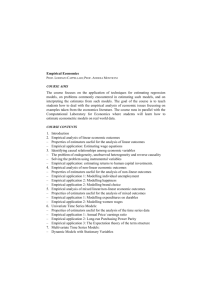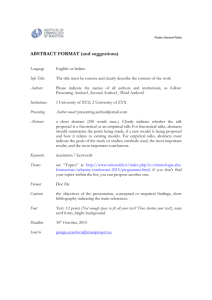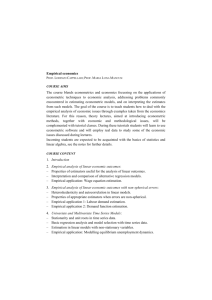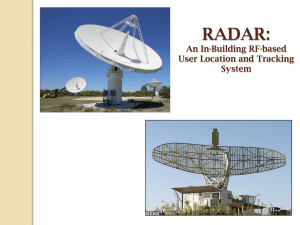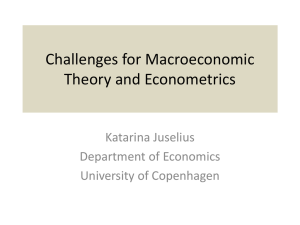Empirical economics
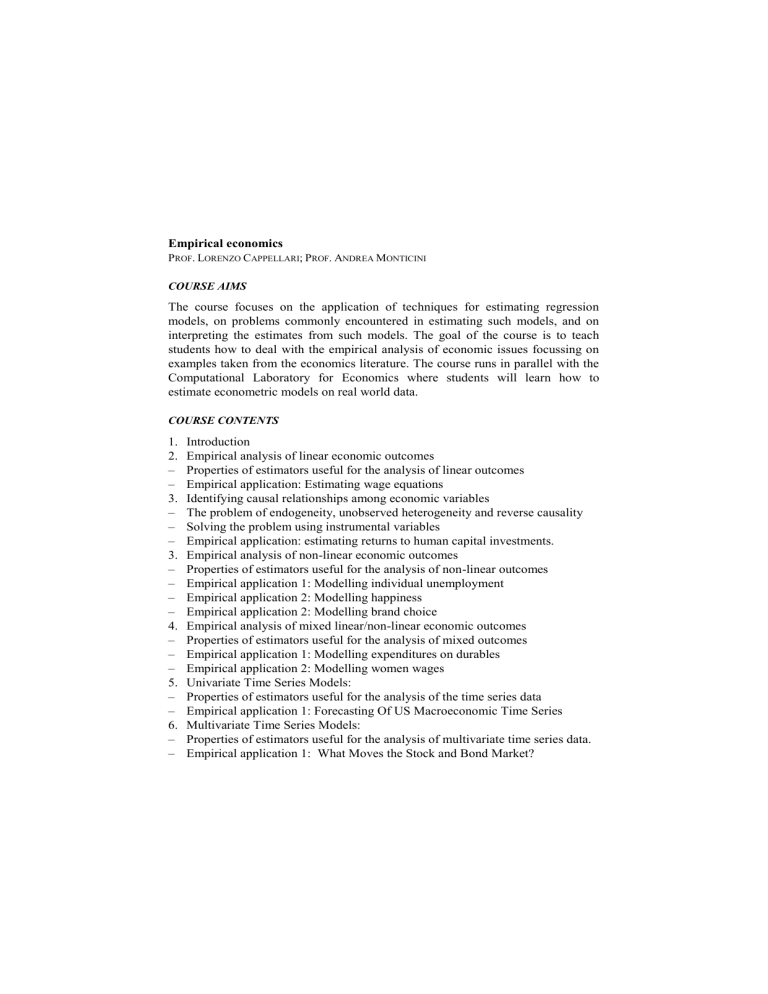
Empirical economics
P
ROF
.
L
ORENZO
C
APPELLARI
; P
ROF
.
A
NDREA
M
ONTICINI
COURSE AIMS
The course focuses on the application of techniques for estimating regression models, on problems commonly encountered in estimating such models, and on interpreting the estimates from such models. The goal of the course is to teach students how to deal with the empirical analysis of economic issues focussing on examples taken from the economics literature. The course runs in parallel with the
Computational Laboratory for Economics where students will learn how to estimate econometric models on real world data.
COURSE CONTENTS
1.
Introduction
2.
Empirical analysis of linear economic outcomes
– Properties of estimators useful for the analysis of linear outcomes
– Empirical application: Estimating wage equations
3.
Identifying causal relationships among economic variables
– The problem of endogeneity, unobserved heterogeneity and reverse causality
– Solving the problem using instrumental variables
– Empirical application: estimating returns to human capital investments.
3.
Empirical analysis of non-linear economic outcomes
– Properties of estimators useful for the analysis of non-linear outcomes
– Empirical application 1: Modelling individual unemployment
– Empirical application 2: Modelling happiness
– Empirical application 2: Modelling brand choice
4.
Empirical analysis of mixed linear/non-linear economic outcomes
– Properties of estimators useful for the analysis of mixed outcomes
– Empirical application 1: Modelling expenditures on durables
– Empirical application 2: Modelling women wages
5.
Univariate Time Series Models:
– Properties of estimators useful for the analysis of the time series data
– Empirical application 1: Forecasting Of US Macroeconomic Time Series
6.
Multivariate Time Series Models:
– Properties of estimators useful for the analysis of multivariate time series data.
– Empirical application 1: What Moves the Stock and Bond Market?
– Empirical application 2: Consumption Aggregate wealth and expected stock returns.
7.
Models Based on Panel Data:
– Static and Dynamic Linear Models
– Empirical application: Which are the main factors of firms' investments?
READING LIST
M.
V ERBEEK , A Guide to Modern Econometrics, Wiley, 3 rd ed.
Detailed reading lists of papers, class notes, and additional teaching material will be uploaded on teachers web pages and/or blackboard (http://blackboard.unicatt.it/)
TEACHING METHOD
The course is based on classroom lectures (60 hours).
ASSESSMENT METHOD
Written examination
NOTES
Incoming students are expected to be acquainted with the materials covered in
Appendices A and B of Verbeek’s textbook.
